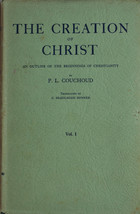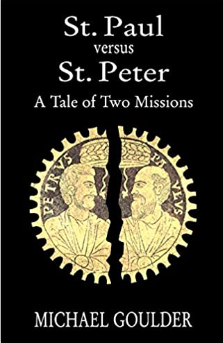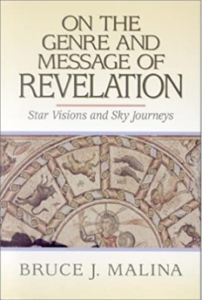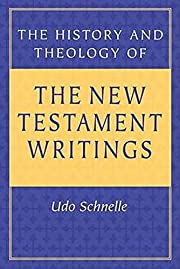I have added a new page in the right column under Archives By Topic to allow easy access to the complete list of recent posts on Revelation presenting Thomas Witulski’s second century date for the work. The page also includes all other posts that have discussed Revelation from various perspectives.
But since we’re here right now, here is a copy of that page:
Annotated list of Vridar posts on the Book of Revelation
Bruce Malina and Revelation as an Astral prophecy
Born of a woman in heaven: cosmic origin of the Messiah 2011-06-05
Discussing Professor Bruce J. Malina’s book On The Genre And Message Of Revelation: Star Visions and Sky Journeys
He sets out a case for the book being an astral prophecy by comparing it with other literature of the time.
The Cosmic Lamb and the Light of the World 2011-06-06
Continuing the discussion of Bruce Malina’s view and his attempts to understand the New Testament through the minds of first or second century readers.
The Book of Revelation, its original meaning and modern misunderstandings 2011-06-11
Continuing Bruce Malina’s scholarship on Revelation: The first thing to understand, Malina writes, is that for the ancient cultures being addressed, there was no division between society and the cosmos. Celestial events and human history were all one entity. The supernatural and natural were all part of the same world.
.
Paul-Louis Couchoud and Revelation’s Christ incompatible with Paul’s
 The earliest gospels 5 – Gospel of John (according to P L Couchoud) 2011-12-31
The earliest gospels 5 – Gospel of John (according to P L Couchoud) 2011-12-31
P-L Couchoud Discusses the earliest intra-Christian disputes in Asia Minor and the emergence of new mystical writings of John after the failure of the hopes expressed in Revelation.
The First Signs of Christianity: Couchoud continued 2012-01-31
For Couchoud, it is this book that “gives us the best picture of the beliefs of the early Christian.”
Earliest divisions in the Christian movement (Couchoud continued) 2012-02-03
Continuing the discussion of Couchoud’s view of the place of Revelation in the first generation of Christianity.
Continuing Couchoud’s view that Revelation was the work of the first century apostle.
The Christ of John’s Revelation — Nemesis of Paul’s crucified Christ (Couchoud continued) 2012-02-26
In depth explanation of how John’s Christ of Revelation was fundamentally incompatible with Paul’s Christ.
.
Who was author “John”?
The Mysterious John of Revelation 2013-03-29
Sets out the early traditions concerning authorship of Revelation and problems they raise.
.
 Author was “a Pauline”?
Author was “a Pauline”?
How a Spurious Letter “From Paul” Inspired the End Time Prophecies of the New Testament 2014-09-11
This post is based on a chapter in St. Paul versus St. Peter: A Tale of Two Missions by Michael Goulder. The post concludes with alternative points of view, including references relating to the question of a persecution under Domitian.
.
 In the Wilderness
In the Wilderness
Jesus’ Baptism in the Context of the Myth of Water, Flight and Wilderness 2018-12-06
Robinson suggests a common source lies behind the Gospel of Mark’s beginning with the baptism and wilderness experience of Jesus, our canonical Book of Revelation’s reference to the birth of a child and the fleeing of its mother to the wilderness, a section of the “gnostic” “Apocalypse (or Revelation) of Adam and a passage in the now mostly lost Gospel of Hebrews.
An experiment comparing gnostic and orthodox myths 2018-12-07
Follow up from the previous post. The Gospel of Mark may be thought of as inverting the rival myths of a messiah or saviour coming with great power.
.

666, Code for Gnostic Wisdom
On Revelation’s Beast and 666 symbolizing Gnostic Wisdom 2022-02-21
The “Dutch Radical” G. A. van den Bergh van Eysinga’s explanation of 666 as a symbol of gnostic Sophia.
.

Dating Revelation in the First Century
The Book of Revelation: an Early Date 2022-01-28
The arguments for dating the book to just prior to the destruction of the Temple in 70 CE as set out in Klaus Berger’s Theologiegeschichte des Urchristentums.

Revelation Dated to the Year of the Four Emperors – Counting “Kings” 2022-01-29
Attempts to explain the seven kings in Revelation 17 in the context of Revelation being written in the year 68/69 CE. I post here extracts from Thomas B. Slater, 2003 and his revised thoughts in 2017.
Dating Revelation to the Time of Domitian (90s ce) 2022-02-20

Reasons some scholars date Revelation to late in the reign of the emperor Domitian (81-96 CE). I refer mostly to the arguments of Yarbro Collins in Crisis and Catharsis : The Power of the Apocalypse.
.
Thomas Witulski’s Second Century Date for Revelation
The Book of Revelation and the Bar Kochba Revolt 2022-02-22
Thomas Witulski dates Revelation to the lead up to and beginning of the Bar Kochba war in the time of Emperor Hadrian, between 132 and 135 CE. This post outlines how the following are interpreted in this framework:
-
-
- the four horsemen,
- the measuring of the temple,
- the two witnesses,
- and the beast and his false prophet.
-
When was the Book of Revelation Written? 2022-02-27

Overview of the various factors raised in discussions about the date of Revelation.
-
-
- The legend of Nero redux or Nero redivivus
- Emperor Worship in Asia Minor
- 666 – the number of the beast
- The seven kings of Revelation 17
- The destruction of Jerusalem
- In touch with early theology (e.g. Paul’s teachings)
- The earthquake of Laodicea in 61 CE.
- Church hierarchies
- Time of war and crisis
- Persecutions – Nero and Domitian
- Twelve apostles and Babylon
- A measure of wheat for a penny, and three measures of barley for a penny; and see thou hurt not the oil and the wine!
- Testimony of Irenaeus
-
Hadrian as Nero Redivivus 2022-02-28

Key points in this post (with reference to publications of Larry Kreitzer):
-
-
- Both Nero and Hadrian waged war with the Jews.
- Both Nero and Hadrian had a special devotion to enriching and reviving the culture of the Greek world
- Nero pursued the cultic-religious worship of his own person, Hadrian that of Antinous (and more to be covered in upcoming posts)
- The travel coins minted by Hadrian mirror the Corinthian local coinage reflecting Nero’s visit there.
- The rule of Hadrian witnessed a flourishing of Jewish apocalyptic writings, including the identification of Hadrian with Nero redivivus.
-
Why was the Book of Revelation Written? 2022-04-15
An overview of the key points argued by Thomas Witulski in Part 2 of Die Johannesoffenbarung und Kaiser Hadrian. Includes links to works that he critiques. Most interpreters of Rev 1:19 consider it to be the key to understanding what Revelation is all about. But after that, opinions are divided. W engages with four main views.
1. A Response to Current Persecutions of Christians?
2. A Cathartic Response to a Perceived Crisis?
3. A Value System of a “Cognitive Minority”?
4. An Answer to Inner-Christian Conflicts?
Witulski’s own view: Revelation was written as a reaction to the intensification of the demand for emperor worship.
Emperor Worship and the Book of Revelation 2022-04-18
When, specifically, in the Roman province of Asia and between 45/50 and 155/160 CE, can we find a massive intensification of cultic-religious emperor worship accompanied by the propagation of the emperor’s divine salvation role? Witulki’s basic thesis:
With Revelation, the apocalypticist aimed at the events of the year 132 AD and the intensification of the cultic-religious veneration of the emperor Hadrian that can be proven at that time. With his work he presented a counter program to a state-imperial conception, within which the incumbent ruler is assigned a soteriological relevance, and a response to the intensification of his cultic-religious worship.” In Hadrian, the apocalypticist saw the first θηρίον [beast], the eschatological antagonist of the άρνίον [lamb] Christ, the high and final point in the line of Roman emperors, who embodies the hubris of the imperium Romanum like no other Roman princeps and enjoys cultic-religious veneration in a manner unknown up to that time. Thus, the writing of Revelation is to be dated to the time immediately after 132 A.D., i.e. approximately in the period between 132 and 135 A.D.. Since it can be assumed that the apocalypticist reacted quite soon to the events taking place in 132 AD, a considerably later dating of Revelation would be unlikely. (Die Johannesoffenbarung Und Kaiser Hadrian p. 138 translation)
The Two Beasts of Revelation 13; and the Image, Mark and Number of the First Beast 2022-05-06
Revelation’s beasts are interpreted against the events of Hadrian’s program of unprecedented intensification of emperor worship in the Greek world (including Asia Minor), the activities of his rhetorician-advisor, Polemon, and Hadrian’s relationship to Nero’s memory and expectations of his return. The prophetic gifts of Polemon and the extravagant statuary are also described. Works of P. Corssen (1902) and S.J. Scherrer (1984) inform much of the discussion.
Emperor Hadrian as Revelation’s Beast from the Sea 2022-05-07
This post discusses the meaning of the “advent” and “presence” of an emperor, a divine figure, as it related to Hadrian’s visits in the eastern Roman empire, all in the context of Witulski’s identification of Hadrian as the subject of the first beast of Revelation 13.
Revelation’s Second Beast, the False Prophet 2022-05-08
Continuing from the preceding post, this post, with the assistance of Anna Benjamin’s and Tamsyn Barton’s research, explores the historical nature of the special gifts of Hadrian’s close friend and advisor, the rhetorician Antonius Polemon, whom W identifies as the second beast of Revelation 13.
666 : Hadrian as Nero Redivivus 2022-05-08
W’s explanation of the application of 666 to Hadrian.
The 7 Kings of Revelation 17 — part 1 2022-05-10
An analysis of the terms used in Revelation 17 and the author’s creative use of other prophetic literature of the time. (Citations of works by David Aune, Hugh Mason, Jürgen Roloff as well as Thomas Witulski)
The 7 Kings of Revelation 17 — part 2 2022-05-12
Looks at different attempts to count “seven kings” from different starting figures. (Citations of works by David Aune, Herbert Bate, E. Lohmeyer, A. Strobel as well as Thomas Witulski)
The 7 Kings of Revelation 17 — part 3 2022-05-16
A symbolic interpretation of “seven kings” is given, along with the question of “the one who is” at the time of writing.
The 7 Kings of Revelation 17 — part 4 2022-05-17
A discussion of what is meant by “a short time”.
The Doctrine of Balaam and the Nicolaitans 2022-05-23
This post begins to set out the main points of Thomas Witulski’s discussion of the situation facing the Christians in Pergamon as described in Revelation 2:12-17. (Citations of works by G.B. Caird, Heinz Giesen, Pierre Prigent in addition to Thomas Witulski)
The Throne of Satan in Revelation 2022-05-24
What was the Throne of Satan (θρόνος τοῦ σατανᾶ) in the city of Pergamon?
Hadrian the God 2022-05-28

Key points from a thesis by Demetrios Kritsotakis discussing Hadrian’s identification with Zeus Olympus and his program of emperor worship in the Greek east.
Hadrian — Man, Program and Impact in the Context of Revelation 2022-05-29
Here I continue quoting Kritsotakis (and works he cites) insofar as they arguably support the interpretation that Hadrian best represents the principal “beast” figure in Revelation. (Includes quotations from Mary Boatwright, Kevin Clinton, Thomas Duncan, Francesco Gnecchi, Harold Mattingly, Joseph Mayor)
The Common Situation Facing the Seven Churches of Revelation (?) 2022-05-30
In Thyatira the woman Jezebel, a “so-called prophetess”, teaches the same message that was identified as the “doctrine of Balaam and the Nicolaitans” in the church at Pergamon: sexual immorality and the worship of idols. The situations of the other five churches are also addressed. (References to works by G.K. Beale and S.R.F. Price as well as T. Witulski)
The White Horseman of the Apocalypse 2022-06-02
 Witulski discusses the symbols and key text in the portrayal of the white horse and its rider and shows how they all apply to the emperor Trajan and his campaigns. (Works by Julian Bennett and Christopher Jones are cited as well as numerous ancient authors.)
Witulski discusses the symbols and key text in the portrayal of the white horse and its rider and shows how they all apply to the emperor Trajan and his campaigns. (Works by Julian Bennett and Christopher Jones are cited as well as numerous ancient authors.)
The Four Horsemen of the Apocalypse — Historical Person Interpretation 2022-06-04
It may seem unusual to think of any of the “four horsemen of the apocalypse” as representatives of individual persons (as we saw in the white horse representing Trajan). Before discusing the other apocalyptic horsemen this post examines the justification for these “historical-personal” identifications.
The Red Horse of the Apocalypse and Its Rider 2022-06-05
The red horse and its rider are said to refer to the Jewish uprisings that spread across the eastern Roman empire in the time of Trajan, apparently led by messianic claimant(s). (References are made to David Aune, G.K. Beale, Heinz Giesen, E. Lohmeyer, Pierre Prigent, E. Smallwood as well as Thomas Witulski)
The Black Horse of the Apocalypse and its Rider 2022-06-06
The suppression of the Jewish uprisings led to serious shortages of grain in Asia Minor. The governor introduced price controls to manage the crisis.
The Pale Horse of the Apocalypse, Its Rider and Companion 2022-06-07
Two Roman commanders (Rutilius and Turbo) were primarily responsible for the brutal suppression of the Jewish uprisings.
Measuring the Temple in Revelation 11 – the Questions Arising 2022-06-20

Witulski’s analysis of Revelation 11:1-2 and this post covers his reasons for disagreeing with the view (first made prominent by Julius Wellhausen) that the passage was referring to the time on the eve of the destruction of the Jerusalem temple in 70 CE. (Quotations from works of David Aune, André Feuillet, Ulrich Müller, Pierre Prigent)
Revelation 12: The Woman, the Child, the Dragon – Wellhausen’s view 2022-06-22
This post backtracks to take a closer look at Julius Wellhausen’s argument.
The Two Witnesses in Revelation 11: the theories 2022-06-24
 An overview of the various theories seeking to explain the “two witnesses” and the problems with identifying them as historical persons.
An overview of the various theories seeking to explain the “two witnesses” and the problems with identifying them as historical persons.
Revelation 11 and the meaning of Measuring the Temple 2022-08-20
We further cover here W’s analysis of the text of Revelation 11:1-2 and his reasons for concluding that it refers to an expectation of a time when a temple would soon be built in Jerusalem. (Includes references to Richard Bauckham and Matthijs Dulk)
The Two Witnesses of Revelation 11 – part A 2022-08-20
Notes that the two witnesses were “well known” to the readers, but their heavenly authority is left vague, as is their message. (Includes references to Donatus Haugg and Ulrich Müller)
The Two Witnesses of Revelation 11 – part B 2022-08-21
Relates the “two witnesses” to the Book of Zechariah and Zerubbabel and Joshua’s role in rebuilding the temple; their violent confrontation with their enemies, and the authenticity of the reference to Jerusalem being the place of the Lord’s crucifixion.
The Two Witnesses of Revelation 11 – part C 2022-08-29
Addresses the evidence for Revelation 11:3-13 being and adaptation of a pre-existing Jewish text about two prophetic figures.
The Two Witnesses of Revelation 11 – part D 2022-09-02
Further analysis demonstrating a source behind Rev 11:3-13 and evidence that the final section about the resurrection and ascension of the two witnesses was not part of the original text of Revelation.
The Bar Kochba War – Background and Hadrian’s Visit to Judea 2022-09-10
Here I post details from sources cited by Witulski addressing the likely causes (both background and immediate) of the Bar Kochba war. Works referenced are by Giovanni Bazzana, Glen Bowersock, Paolo Cimadomo, Helmut Halfmann, Ernst Kantorowicz, Steve Mason.
The Simon Bar Kochba Rebellion 2022-09-11
The severity and extent of the Bar Kochba war are discussed. References works by Gedalia Alon, Adolf Büchler, Lucette Huteau-Dubois, Leo Mildenberg.
Revelation 11: Measuring the Temple and Two Witnesses – A Contemporary Interpretation 2022-09-12
Conclusion of the series of posts covering Thomas Witulski’s three books on reading Revelation against the background of Hadrian and the Bar Kochba war. Addresses the contradictory evidence of Cassius Dio and Eusebius; details how such an interpretation can explain various details in Revelation 11’s prophecy of the measuring of the temple and the career of the two witnesses.
.
If you enjoyed this post, please consider donating to Vridar. Thanks!




I’ve discovered yet another possible connection to the time of Hadrian often overlooked. Hadrian station the Legio VI Ferrata near Megiddo which gave it’s name to the modern village of Laijun. Armageddon in Revelation is not the site of a Battle itself but the gathering point of the Armies. So this really does line up perfectly.